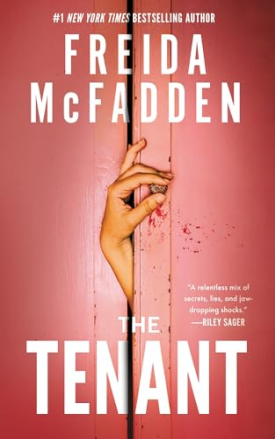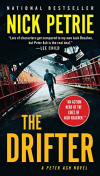Jenny Odell Books In Order
Book links take you to Amazon. As an Amazon Associate I earn money from qualifying purchases.Publication Order of Non-Fiction Books
| How to Do Nothing | (2019) | Description / Buy at Amazon |
| Saving Time | (2023) | Description / Buy at Amazon |
Jenny Odell is a published American author and artist.
Based out of Oakland, California, she has done work that involves various levels of close observation. This can extend to collecting screenshots, researching the subject of trash, bird watching, or trying to figure out strange forms of e-commerce. Jenny says that she is always looking for frameworks that are going to be able to see something new about the reality we move through every day.
Her first book came out in 2019 and is titled How to Do Nothing: Resisting the Attention Economy. Her second book is titled Saving Time: Discovering a Life Beyond the Clock.
Jenny has also done visual work which has been exhibited at places such as the New York Public Library, The Contemporary Jewish Museum, Les Rencontres D’Arles, the Marjorie Barrick Museum of Las Vegas, La Gaite Lyrique in Paris, the Lishui Photography Festival in China, and apexart in New York.
Jenny has also been an artist in residence at the Montalvo Arts Center, the San Francisco Planning Department, and the Recology SF. She has also taught at Stanford University, instructing students on digital art from 2013 to 2021.
The artist was born in 1986 in San Francisco. She attended UC Berkeley and graduated in 2008 with her degree in English Literature. She attended the San Francisco Art Institute in 2010 and graduated with her MFA in design and technology.
At Recology SF, a.k.a. the San Francisco dump, she served as the artist in residence for 2015. This would lead to her work being exhibited with her project The Bureau of Suspended Objects, which was a number of objects that had been found and picked out at the dump. She conducted research into each object and its manufacturing as well as its distribution, popularity, and use.
A lot of her art comes from within and takes from the Internet, and this was also part of that. Much of the content comes from the Internet and is available online. The history is intended to bring some attention to the resources that can be involved in the production of the products and their consumption.
Odell also worked on Neo-Surreal, a collection that was completed in 2017 while she was artist in residence at the Internet Archive. While she was there, she found a BYTE collection from the eighties. The American computing magazine had images that she pulled and then edited and curated to show the industry’s surreal nature back then and now.
How to Do Nothing: Resisting the Attention Economy is a 2019 book from Jenny Odell. It’s all about how you can take a break from the attention economy, building on topics previously covered in her art such as the human relationship to technology as well as how observation can also be a critical action. Doing nothing can also be a strategy which resists technology driven by profit which should hold our attention no matter what. If you have been looking for a unique book to read, this is it!
The artist says that doing nothing can be a way to engage with your surroundings more and refuse to be part of the life online. The book has been praised by Jonah Bromwich in a New York Times interview, saying how Odell constructs a book that is complex, smart, and ambitious. At first it seems like a manual on self help, and then goes into being a political manifesto, a criticism of capitalism.
Technology that we turn to use every day can end up making our experiences subject to being available around the clock, into witnessing monetized products, personal branding platforms. In such a world, the author asserts that the most radical thing that we can often do is to do nothing. An original book that shows how we can become more connected.
Saving Time: Discovering Life Beyond a Clock is the second book to come out from Jenny Odell. This 2023 book puts forth how much of the world perceives that time is centered around making the most profit for a capitalist system as opposed to serving the people’s well-being.
The book also shows the author differentiating between the kairos and chronos time. Chronos time ends up being capitalist time, an employee time clock. Kairos is like a crisis, and is a feeling that time’s passing in a certain way but is also more hopeful, and is the time where transformation is possible.
This is a book that explores those who have time to spend and those who do not. Our society is built around living by the clock, and it’s one that was constructed for profit and not for the people. Now our lives are seeming like different moments that can be purchased, sold, and processed.
Odell explores how the relationship that we have to time is connected to many things, such as social inequities, existential dread, the climate crisis, and fatalism.
This is a book that may seem depressing, but it is also hopeful. It is giving us ways that we can experience time differently. They are taken from the ecology of the world, of geological timescales, of cultures that existed in pre-industrial times.
It gives the readers the hope that we can continue a way of living that is more responsive, more human. We are animals that live on a planet, and we reside inside of days that grow longer and shorter, by gardens that grow, by birds that fly and migrate places, by cliffs that are slowly eroding.
The present might feel like it is marbled with the memory of times past. We may feel the injuries of the past. The author wants us to pay attention to these different life rhythms, in which time cannot be pushed into standardized units, but instead forms the fiber of possibility.
This is all about reality, not the way we experience time, but imagining a world where we can save time where we have meaning, a life, and identity outside of all of this. Check out this unique book to see Odell’s radical point of view!
Book Series In Order » Authors »


 Any issues with the book list you are seeing? Or is there an author or series we don’t have? Let me know!
Any issues with the book list you are seeing? Or is there an author or series we don’t have? Let me know!